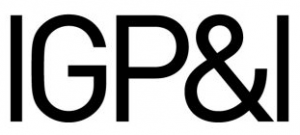Despite detailed IMO recommendations setting out safety precautions for fumigating vessels’ cargo holds, casualty investigations continue to reveal critical gaps in training, gas monitoring, and risk awareness - leaving crews exposed to life-threatening hazards during in-transit fumigation.

Beware of in-transit fumigation risks
Published 09 October 2025
Fumigating cargoes in vessel holds is essential to ensure products arrive free from infestation and in good condition. Aluminium phosphide is the most commonly used pesticide, and it is typically dispersed as tablets which release phosphine gas when exposed to moisture inside the holds. As phosphine is heavier than air, the gas sinks, penetrating the cargo, and thus protects it by killing insects and pests.
While effective against pests, phosphine is also extremely hazardous to humans. Inhalation can cause respiratory distress, nausea, and, in severe cases, death. At concentrations above 1.8% by volume, the gas becomes flammable and potentially explosive. According to Brookes Bell, such explosions typically occur within the first 8 to 24 hours after cargo hold hatches are closed, likely due to elevated phosphine concentrations in the hold headspaces during this initial phase of the fumigation process.
Despite the inherent risks, in-transit fumigation, where treatment continues during the voyage, is often preferred by shippers and charterers seeking to minimise time spent in port. Many charterparty clauses, such as the 2015 BIMCO Cargo Fumigation Clause, appropriately reference IMO best practice recommendations and assign responsibilities to the charterer. However, if agreed safety protocols are either not strictly followed or fail to address all operational risks, it is ultimately the crew who are exposed to the direct health and safety hazards.
Incident statistics and lessons learned
Over the past decades, numerous marine casualties have been directly linked to in-transit fumigation. Tragically, many fatalities have resulted from fumigant gases leaking into accommodation areas and crew cabins - spaces intended to be the safest onboard. According to InterManager, around 6% of all shipboard enclosed space accident deaths since 1996 have taken place within accommodation spaces, mainly due to the ingress of cargo fumigants.
Further highlighting the seriousness of the issue, a joint analysis conducted in July 2025 by flag states and industry associations revealed that at least 46 seafarers and port workers have died since 2008 due to hazards associated with cargo hold fumigation (CCC 11/5/6 (Bahamas et al.)). While some incidents were caused by fire, explosion, or oxygen depletion, the report authors concluded that the leading cause of death was exposure to toxic fumigant gases – including inside accommodation areas.
Investigation reports into these serious casualties frequently highlight a number of recurring lessons learned, including:
Inadequate pre-loading and post-fumigation inspections – failure to properly seal the cargo holds, and test the gas-tightness of ventilation trunks, shared bulkheads, and electrical conduits, allowed fumigant gases to migrate into accommodation or work areas.
Limited awareness of ventilation dynamics – changes in ventilation system airflows created negative pressures in otherwise safe spaces, drawing fumigant gases inward.
Insufficient or ineffective gas monitoring – periodic gas checking regimes or equipment failed to detect residual or migrating gases.
Crew unfamiliarity with fumigant exposure symptoms – early signs of phosphine poisoning were mistaken for other illnesses such as food poisoning or seasickness, delaying appropriate response.
Unsafe entry into fumigated holds – crew or port workers entered without prior atmosphere testing and without using breathing apparatus. In these cases, reliance was often placed solely on gas-free declarations issued by fumigation personnel, without awareness that fumigant gases can remain trapped in pockets within the cargo stow.
However, the true risk to personnel and vessels may be even greater than statistics suggest. At Gard, we have encountered numerous cases involving cargo disputes linked to alleged fumigant burns on the top layer, as well as discharge delays caused by excessive fumigant concentrations in the holds, highlighting hazards that could easily have led to far more serious consequences.
On a more positive note, the recently compiled incident statistics and lessons learned have brought increased focus on fumigation hazards and have strengthened the case for a further review of fumigation safety practices at IMO level.
Current IMO best practice recommendations for fumigation
The carriage of cargoes and the use of pesticides for fumigation onboard vessels are governed by SOLAS Regulation VI/4, which refers to IMO circular MSC.1/Circ.1264 for detailed guidance supporting the safe conduct of cargo hold fumigation operations. However, while SOLAS cites this circular, it does not make compliance mandatory. By contrast, Section 3.6 of the IMSBC Code explicitly requires compliance with circular MSC.1/Circ.1264 when cargo fumigation is carried out during transit and sets out specific safety measures to protect both personnel and the vessel. It should be noted, however, that the IMSBC Code does not apply to grain cargoes, which are regulated separately under the International Grain Code.
A central principle of circular MSC.1/Circ.1264 is that, given the toxic nature of fumigants and the specialised equipment and expertise required, fumigation should be carried out exclusively by qualified professionals - not by a vessel’s crew. A fumigator-in-charge should be designated by the fumigation company, government agency, or another competent authority to oversee the operation. This individual should also be able to provide documentation to the master confirming their competence and authorisation.
Where possible, fumigation should be completed in port, with the crew disembarked. If in-transit fumigation is unavoidable, it should only be carried out at the master’s discretion, in full compliance with applicable flag and port state requirements, and by strictly following the safety precautions set out in the IMO circular.
In-transit fumigation: Main IMO safety precautions
Crew training: At least two crew members, including one officer, should be formally trained and designated to oversee safety onboard once the fumigator-in-charge hands over responsibility to the master. These crew members should:
- Be familiar with the Safety Data Sheet for the fumigant used.
- Understand the manufacturer’s recommendations regarding detection methods, hazardous properties, symptoms of poisoning, first aid, and special medical and emergency procedures.
- Brief the rest of the crew on fumigation hazards, safety measures, and emergency actions.
Pre-loading inspection: The fumigator-in-charge, together with a trained crew member, should inspect and/or test the empty cargo holds for leaks. This is to ensure that proper sealing can be arranged either before or after loading. Once the inspection is complete, the fumigator-in-charge should provide a written confirmation that the inspection and any related tests have been carried out, along with a description of how the cargo holds are, or can be made, sufficiently gas-tight.
Post-fumigation inspection: Following the same procedure as the pre-loading inspection, a post-fumigation inspection should be carried out to check for leaks and seal any that are found. If leak detection is delayed due to slow fumigant gas release, the vessel should remain in port, or the fumigator-in-charge should stay onboard, until safe conditions can be confirmed.
Attesting safe conditions: On or after application of the fumigants, and prior to leaving the vessel, the fumigator-in-charge should:
- Post warning signs at all entrances to spaces under fumigation or otherwise considered unsafe during the process, and notify the master of the same.
- In cooperation with the master and crew, ensure the vessel is equipped with appropriate gas detection and respiratory protection equipment, along with a copy of the latest version of the Medical First Aid Guide for Use in Accidents Involving Dangerous Goods (MFAG). Clear instructions should also be available regarding exposure limit values for the fumigant gas and the proper disposal of residual fumigant material.
- Provide the master with a written statement confirming that the fumigant gas concentration within the cargo hold(s) is sufficiently high to enable effective leak detection, spaces adjacent to the treated cargo hold(s) have been checked and verified to be gas-free, and a designated vessel representative is fully trained and familiar with the use of the gas detection equipment provided.
Monitoring hazards during voyage: The crew should conduct regular gas concentration safety checks throughout the voyage at all relevant locations, including accommodation and workspaces adjacent to fumigated cargo holds. These checks should be performed at intervals not exceeding eight hours - or more frequently if so advised by the fumigator-in-charge.
Access restrictions during voyage: Cargo holds sealed for fumigation in transit should never be opened or entered at sea, except in extreme emergencies and in accordance with strict safety protocols. If ventilation of a cargo hold becomes essential, every precaution should be taken to prevent fumigant gases from entering accommodation or working areas.
Safety protocol at the discharge port: Well in advance of arrival, the master should notify port officials that in-transit fumigation is being carried out, indicate whether ventilation has commenced, and share the fumigation company’s instructions on how any powdery residues are to be disposed of. Only mechanical unloading should be performed. If entry into fumigated cargo holds is absolutely necessary, continuous gas monitoring and appropriate respiratory protection should be used until a trained professional at the discharge port has formally declared the space gas-free.
Recent changes to IMO guidance
At its 110th session in June 2025, the IMO Maritime Safety Committee (MSC) approved updates to MSC.1/Circ.1264, introducing a new recommendation for the treatment of solid bulk cargoes with phosphine. Specifically, it advises the use of protective sleeves over loose phosphine tablets to reduce post-fumigation hazards. Loose tablets may remain in the cargo after fumigation, posing a serious risk to crew and port workers involved in discharge or transhipment operations.
In the same session, the IMO adopted a revised version of its recommendations for entering enclosed spaces aboard ships (Resolution MSC.581(110)). The updated resolution places greater emphasis on cargo-related atmospheric hazards, particularly those associated with solid bulk cargoes. It addresses the risk of hazardous atmospheres - including fumigant gases - spreading beyond cargo holds into connected or adjacent spaces, and introduces additional control measures to mitigate these risks.
Furthermore, in September 2025, the IMO Sub-Committee on Carriage of Cargoes and Containers (CCC) agreed that a new output on the safe use of pesticides and fumigation practices in cargo holds was needed. Member states were invited to submit proposals, focusing on key areas such as continuous gas detection, enhanced pre-loading risk controls, improved crew training, and strengthened measures to address all associated risks, including fire and explosion.
Key recommendations
Despite the existence of industry best practice recommendations, fumigation-related incidents continue to occur. While it remains uncertain how many fatalities could have been prevented through stricter adherence to the current IMO guidance, many incidents have been linked to the absence of vessel-specific procedures, underestimation or lack of awareness of the risks involved, or decisions influenced by commercial pressures.
The IMO best practice recommendations clearly assign primary responsibility for the fumigation process to the designated fumigator-in charge. However, the vessel operator and master remain responsible for ensuring safe working conditions onboard. Therefore, when fumigation is planned – especially if treatment will continue during the voyage - the precautions outlined in MSC.1/Circ.1264 should be reviewed and used as a basis for establishing appropriate vessel-specific safety protocols within the Safety Management System (SMS). A checklist can be prepared using Appendix 3 of the IMO circular, Model Checklist for In-Transit Fumigation, or by referring to the Fumigation Checklist found in the Fumigation Handbook published by the United States Department of Agriculture (USDA).
In addition, the following measures should be considered:
Conduct or reaffirm risk assessments, ensuring that all hazards associated with fumigated cargoes, including toxic exposure, oxygen depletion, fire, and explosion risks, are identified, addressed, and managed throughout the voyage.
Ensure vessel-specific enclosed space registers and entry procedures clearly recognise the presence of dangerous fumigant gases as an added risk – both for cargo holds and for spaces connected to or adjacent to fumigated holds.
Provide comprehensive general-level training to all crew members. In addition, when in-transit fumigation is planned, the fumigator-in-charge should brief all crew members directly on fumigation hazards, symptoms of exposure, and emergency actions - rather than delegating this responsibility solely to the designated vessel representatives. Ensure full attendance and understanding during safety briefings.
Verify that emergency procedures are in place to deal with crew exposure to fumigant gases. The US CDC’s emergency response card on phosphine provides useful information. Medical officers could also consult the emergency section of the Mariners Medico Guide for up-to-date guidance on treating patients exposed to poisonous gases.
Require thorough pre-loading gas-tightness inspections by the fumigator-in-charge, with documented results. Where gas-tightness cannot be determined with certainty, implement additional risk control measures, such as supplementary gas monitoring. After fumigant application and before disembarkation, require the fumigator-in-charge to inspect and confirm that no gas leaks are present and to formally attest that conditions onboard are safe.
Emphasise the designated vessel representatives’ responsibility to participate in both pre-loading and post-fumigation inspections. This promotes crew awareness and familiarity with vessel conditions and potential risk areas. However, avoid placing responsibility on the master or their representatives to sign-off for gas-tightness and safe conditions, as this may create a conflict of interest.
Implement procedures to minimise crew time spent on deck and near hatch covers during the first 24 to 36 hours after fumigation has been set - when the risk of fumigant gas explosions is highest.
Equip vessels with reliable portable atmosphere testing instruments, fitted with sensors capable of detecting fumigant gases such as phosphine, and increase the frequency of gas checks.
Arrange for continuous atmosphere monitoring in high-risk areas, such as spaces connected to or adjacent to fumigated cargo holds, especially if those spaces are designed for continuous occupation or are frequently accessed.
Assess the impact of modifying or interrupting ventilation system airflow during the voyage, as such changes may increase the risk of hazardous conditions.
Reinforce that crew should never handle fumigants. If top-up fumigation is required during the voyage (e.g. for log cargoes), request the fumigator-in-charge to sail with the vessel.
Establish a clear company policy on the use of adequate respiratory protection for personnel that enter holds where fumigants have been present - acknowledging that hazards may persist even after a hold is certified gas free and spent fumigants have been removed, and warning crew and port workers to remain vigilant and use appropriate protective equipment until all risks are eliminated.
Finally, company procedures should clearly state that the master has the right to refuse in-transit fumigation if it is deemed unsafe. Safety should always take precedence over commercial considerations.




